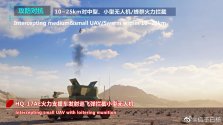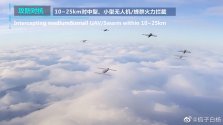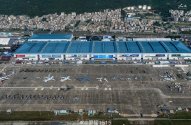I have strong doubts that even a much more electronically sophisticated swarm drone is going to have good enough ESM to make use of such ranges. But okay I'm not aware of the navigation they might use. A $100,000 missile surely would have much more impressive equipment in these regards. If a drone swarm unit had expensive comms and nav equipment, it would sort of defeat the purpose of their inherent strength.
Surely Russia has fewer AA than China. When you say more than China, do you mean by concentration of AA? All types including guns? Because there's no way Russia has more S-300 and S-400 than China has HQ-9 and so on for whatever layer AD. Russia's manufacturing simply isn't on the same scale. This is my assumption. We don't know exactly how many units/missiles each has but Russia would indeed have a higher concentration of AA present along the Ukraine border, Kalinigrad border, and Black sea compared ith what China would be able to put up along its entire coastline. I mean Russia barely has enough AKs and tanks without going into reserves and mothballed fleets.
And yet Himars, drones, SRBMs, and MLRS (other than Himars) are able to hit Russia despite such high concentration of AA. We all know AD is far from impervious and against any serious opponent is more to slow them down, demand more planning, and demand more resources from opponents, truly testing them more than having no AD would.
Most of this is low key talking for Russia. Not interested in this dialogue's direction.
Back to the swarm anti carrier idea, still doesn't work unless they are able to navigate towards targets from long ranges, all on their own, without much air support in terms of providing ECM, aiding their penetration somehow, and protecting them from being shot down at long ranges (okay this is a non relevant one for now but there will be a time where cheap micro missiles are designed to be carried by aircraft or other platforms and provide some range I mean Zhuhai 2022 already shows one).
View attachment 101547
View attachment 101548
If there are pieces of technology that allows cheap swarm type drones from getting past USN EW barriers, maybe there's a purpose for them in this scenario.
Don't compare Ukraine Russia scenario and draw parallels. Shaheds "working well" does not translate to PLA using a similar concept would work well against USN. USN is not Ukraine lol. Surely you can assume they have enough sophistication to disable any cheap sort of solution. If it were so simple, PLA from the 1980s could have already put the concept to work and produce worthwhile pieces of equipment by the 2000s. You know what the PLA did instead? Researched and developed hypersonic glide weapons and MaRV since the 1980s and put them into service (at least for MaRV) since late 2000s. Clearly PLA considers these "cheap" solutions as non-solutions against any sophisticated adversary.
And sorry but Russia is not sophisticated. Sophisticated means you can design and produce at least mature node chips of every variety and type. China is barely that and only after mobilising armies of engineers and pouring billions into it. Russia has no such resource pool to draw from. The US has a bigger resource pool than China. Do we really think they can't find a way to counter lawn mower engine budget "cruise missiles"?
Shaheds won't work against any half capable adversary. That direction of attrition warfare is played out in terms of AD and high end real cruise missiles including hypersonic ones when it comes to sophisticated militaries. Propaganda in this war from all sides have really let the fans and cheerers on whatever side go nuts for their superhero/team. We should get real on this forum. Shahed has a place and its place is low, low,
low tier conflict and players.



